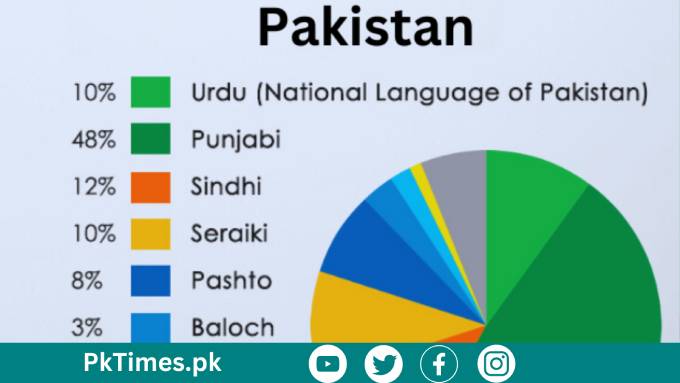Pakistan, with its rich cultural heritage and diverse population, is home to a multitude of languages, each reflecting the country’s complex history and unique regional identities. In this blog post, we embark on a journey to uncover the linguistic tapestry of Pakistan, exploring the multitude of languages spoken within its borders and the significance of this diversity in shaping the country’s identity.
II. Linguistic Diversity in Pakistan
Pakistan’s linguistic landscape is a reflection of its diverse population and historical influences. The country boasts a wide array of languages, belonging to various linguistic families, including Indo-Aryan, Iranian, Dravidian, and others. This linguistic diversity is a testament to Pakistan’s rich cultural heritage and the amalgamation of different ethnic groups and traditions over the centuries.
III. Major Languages of Pakistan
Among the major languages spoken in Pakistan, Urdu holds a central position as the national language and lingua franca of the country. Other significant languages include Punjabi, Sindhi, Pashto, Balochi, and Saraiki, each with its own unique history, cultural significance, and geographical distribution. These languages are not only spoken widely across Pakistan but also hold official or provincial status in certain regions.
IV. Regional and Minority Languages
In addition to the major languages, Pakistan is also home to a multitude of regional and minority languages, each with its own distinct characteristics and cultural significance. Languages such as Kashmiri, Brahui, Hindko, and others are spoken by specific communities in certain regions of the country. While these languages may not have official recognition, they play a vital role in preserving the cultural heritage and identity of their speakers.
V. Significance of Linguistic Diversity
The linguistic diversity of Pakistan is not merely a reflection of its cultural richness but also a source of national pride and unity. Language serves as a powerful tool for communication, social interaction, and cultural expression, fostering a sense of belonging and community among diverse ethnic groups. Embracing linguistic diversity is essential for promoting social harmony, understanding, and mutual respect among Pakistan’s diverse population.
VI. Conclusion
In conclusion, Pakistan’s linguistic diversity is a testament to the country’s rich cultural heritage and historical legacy. The multitude of languages spoken within its borders reflects the complex tapestry of identities and traditions that define Pakistan as a nation. As we celebrate this linguistic diversity, let us recognize the importance of preserving and promoting the various languages of Pakistan, ensuring that they continue to thrive for generations to come.
Read more: how many cities in Pakistan
FAQ’s
. How many languages are spoken in Pakistan?
Pakistan is home to a diverse linguistic landscape, with estimates suggesting that over 70 languages are spoken within its borders. These languages belong to various linguistic families, including Indo-Aryan, Iranian, Dravidian, and others. While some languages, such as Urdu, Punjabi, Sindhi, Pashto, Balochi, and Saraiki, are widely spoken, there are also numerous regional and minority languages spoken by specific communities in certain regions of the country.
2. What is the significance of linguistic diversity in Pakistan?
Linguistic diversity plays a crucial role in shaping Pakistan’s cultural identity and national unity. The multitude of languages spoken within the country reflects its rich cultural heritage and historical legacy. Language serves as a powerful tool for communication, social interaction, and cultural expression, fostering a sense of belonging and community among diverse ethnic groups. Embracing linguistic diversity is essential for promoting social harmony, understanding, and mutual respect among Pakistan’s diverse population.
3. How does Pakistan address the preservation of minority languages?
While Urdu serves as the national language of Pakistan, the country recognizes several regional languages as official or provincial languages, such as Punjabi, Sindhi, Pashto, Balochi, and Saraiki. Additionally, efforts are being made to preserve and promote minority languages spoken by specific communities in certain regions. Organizations such as the National Institute of Pakistan Studies and the Pakistan Academy of Letters conduct research and publish resources on linguistic diversity, while language revitalization projects aim to safeguard minority languages from extinction. However, challenges remain in ensuring the continued preservation and promotion of Pakistan’s linguistic heritage.


